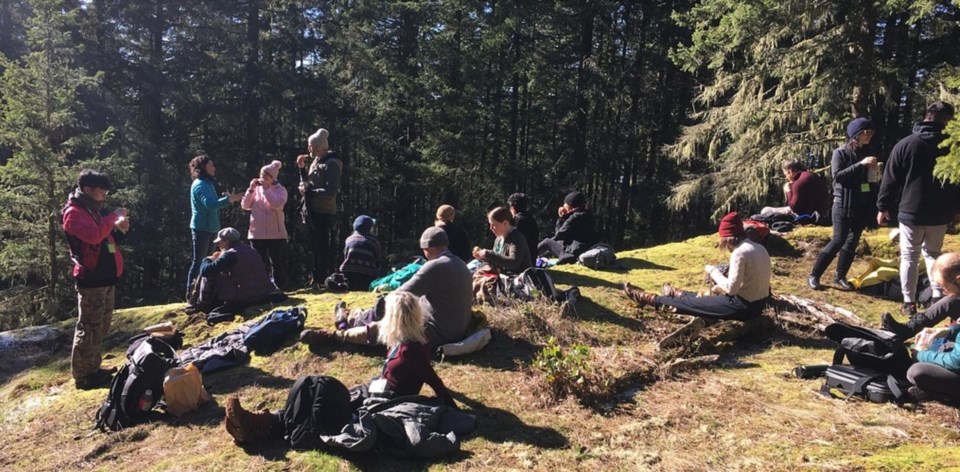Sunshine Coast Community Forest (SCCF) cancelled plans to log two east ts'uk̲w'um (Wilson Creek) cutblocks adjacent to a proposed Mt. Elphinstone Provincial Park expansion area, operations manager Warren Hansen told Coast Reporter on April 5.
A day earlier, Elphinstone Logging Focus (ELF) stated in a press release that blocks EW 18A and B had been removed from SCCF’s logging schedule for 2025, after “public and scientific pressure produced evidence” that the area, which the group dubbed SongBird forest, “is of high ecological value” and identified for old growth recruitment.
“When we started our ecosystem based management (EBM) system we said that we would be looking at the best old growth recruitment areas within our tenure. We had all the candidate areas for old growth recruitment assessed and there was an overlap for cutblocks 18A and B, so we decided that they should not be harvested,” Hansen stated. Under EBM, he said the goal is to “protect fully functioning ecosystems first and then look at harvesting”.
Cancellation was an operational decision, but Hansen indicated SCCF’s board reviewed the adjusted operating plan and agreed with the methodology used to support those changes. The cutblock plan on the company’s website indicates a reduction in the area planned for logging in 2025 by 15.3 hectares and with its estimated timber harvest volumes going from 35,500 to 21,500 cubic metres.
Hansen noted that an updated five-year operating plan, which will consider new areas for harvest is to be released for public discussion later in the year.
The website states EBM integrates biological, social and economic factors to help protect and enhance sustainability, diversity and productivity of natural resources, incorporating the best science with community and Indigenous values.
Plans to log third cutblock remain
Another SCCF cutblock within the SongBird area, EW 19 remains listed as proposed for harvesting in 2025. That site is 17 hectares in size with an estimated timber volume of 15,000 cubic metres.
Hansen said that area was also assessed for old growth recruitment potential. “We looked at it from a forest attribute score, and it came out to be low, even though it is next to a park, even though it is next to other old growth recruitment areas”.
While there is “no hard stop as of yet” on logging plans for that cutblock, he said SCCF is awaiting the completion of the land use planning project of the shíshálh Nation and the province to ensure that their wishes for that area are fulfilled before decisions on harvesting are made.
That cutblock is also within a Roberts Creek study forest area, where Ministry of Forests researchers could test different logging or silviculture systems for research purposes. Those could include approaches like those of the Mother tree project or high retention harvesting systems like selective logging. Hansen explained that in a study forest, “researchers collaborate together to document knowledge could be looked to adjust practices industry wide."
“I believe that is something that the Community Forest should advocate and facilitate,” he stated.
ELF spokesperson Ross Muirhead stated in an email that the organization is opposed to use of EW 19 in the study and will be starting a “full campaign to protect it” as an old growth recruitment area.
In late 2022, ELF and SCCF agreed to conduct regular meetings to discuss of issues of mutual interest. Hansen noted he has found the dialogues held to date helpful and that future events could be an opportunity for discussion on EW 19.
SongBird forest’s name origins
“The name given this forest is an acknowledgment of the thousands of bird nests that quietly get destroyed on the Sunshine Coast every year from clearcut logging and urban expansion. Native forest habitat is critical to preserving the diversity of birds and other species in this inter-urban zone. The Sunshine Coasts low and mid-elevation forests are currently at high risk of permanent biodiversity loss.” ELF stated in its press release.
On its website, ELF invites hikers to visit the forest, which can be accessed from the top of Lockyer Road, via the Wilson Forest Service Road. After passing over the East Wilson Creek bridge, flagging on the right marks the trail to the site.



